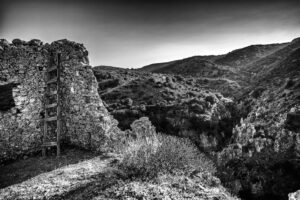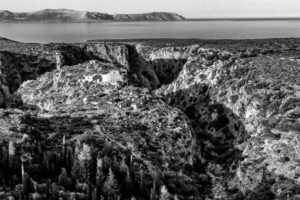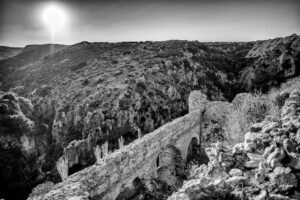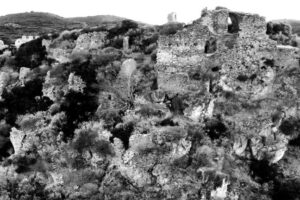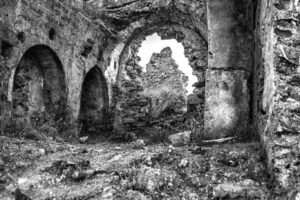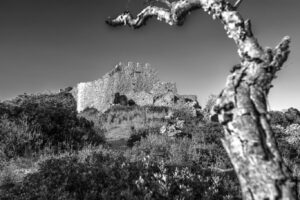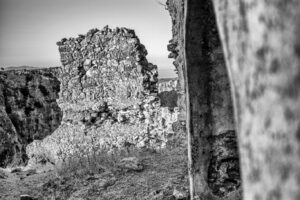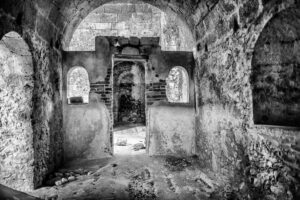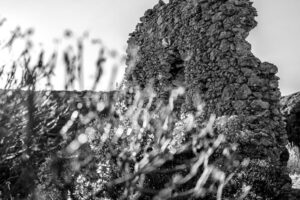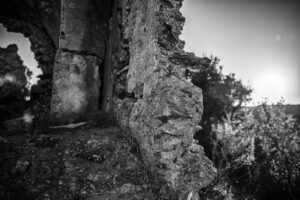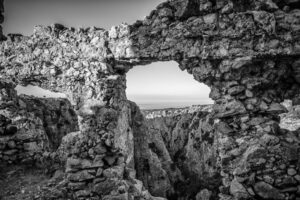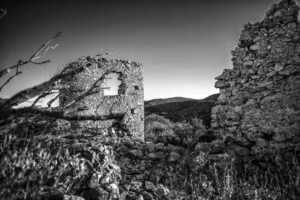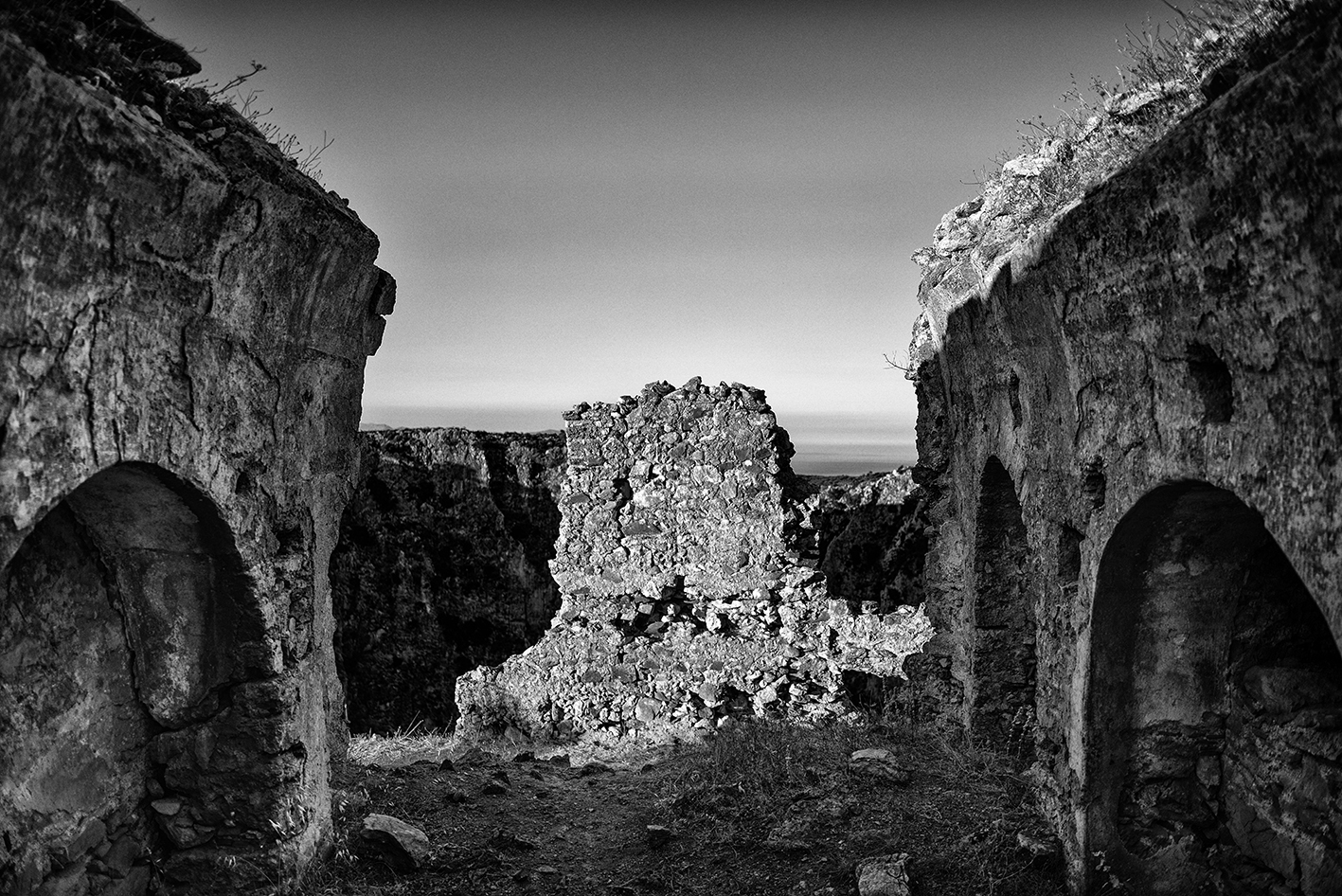
In Paleochora, we first encounter the exceptional landscape that has emerged, through millennial developments, from a timeless geological phenomenon.
Large-scale seismic phenomena have created three ravines (more than 100 meters deep at their deepest points) at the meeting of which emerges a kind of “needle” of stone, a vertical rock, connected by a limited strip of land to the surrounding landscape.
On top of this rock was built, in Byzantine times, Paleochora, a hidden city, invisible from all sides, both for the traveler by the sea and for the wanderer in the nearby mountainous region.
This small fortified city (Paleochora, that is to say, the ancient capital during the period of the Byzantine presence on the island) took refuge in an important population of Byzantine families, after the fall of Constantinople in 1453, first passing through the upper town of Monemvasia and finding shelter there after the fall of the latter.
The violent destruction by the Turkish pirate Barbarossa (but at the same time commander of the Turkish fleet) of Paleochora in 1537, with the decimation of most of its population, after a betrayal and the revelation of its secret position, leaves a tragic scene of desolation, which still maintains for the visitor today, the great existential intensity of a terrible present/absent event.
In the remains of a dense construction both inside the fortification wall and outside, in the alley of the steep cliff, there is a multitude of small churches (in someone still finds traces of important late Byzantine wall hangings with religious themes) which testify to the need to shelter in a small space, a large population which had hoped and worked for some years for its salvation in the face of imminent and visible maximum danger, without finally being able to escape disaster.
The whole landscape to this day underlines this agony, this hope, and its tragic denial.
